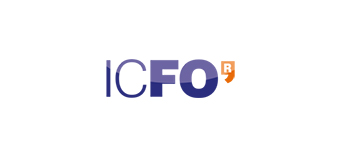Does an electron wavefunction collapse when interacting with light?
Ido Kaminer (Technion)
WATCH THE RECORDED LECTURE HERE
ABSTRACT:
The fundamental interaction between free electrons and light stands at the base of both classical and quantum physics, with applications in free-electron acceleration, radiation sources, and electron microscopy. Until 2020, it was believed that coherent emission of light by free electrons (and by any free charged particle) can be fully described by classical electromagnetism in all experimental settings, disregarding the quantum nature of light. We recently found that even in seemingly classical experimental regimes, light emission is fundamentally tied to the quantum coherence and correlations of the emitting particle. We use quantum electrodynamics to show how the particle’s momentum uncertainty determines the optical coherence of the emitted light. As an example, we show that the temporal duration of Cherenkov radiation, envisioned for almost a century as “a shock wave of light”, is limited by underlying entanglement between the light and the emitting particle. Taking these concepts to the lab, we recently observed quantum statistics effects of photons on free-electron-light interactions. We demonstrated interactions passing continuously from Poissonian to super-Poissonian and up to thermal statistics, unveiling a surprising manifestation of Bohr’s Correspondence Principle: the transition from quantum walk to classical random walk on the free-electron energy ladder. The electron can perform both quantum weak measurements and projective measurements by evolving into an entangled joint-state with the photons – thus the same experimental setup can show both a unitary interaction and a collapse of the electron wavefunction – occurring for different interaction parameters. Our findings suggest a new concept in quantum optics: free-electron-based non-destructive quantum tomography of light. Looking forward, we propose new detection schemes in high-energy physics based on photon autocorrelations to unveil the wave function structure of any charged particle.
RECOMMENDED PAPERS:
https://advances.sciencemag.org/content/7/18/eabf8096/
BIO:
 Prof. Ido Kaminer leads the AdQuanta lab at the Technion since 2018. He did his PhD at the Technion with Prof. Mordechai Segev, and his postdoc at MIT with Prof. Marin Soljacic and Prof. John Joannopoulos. Ido’s research group addresses problems at the frontiers of Photonics, Quantum Optics, and Electron Microscopy by developing novel theoretical and experimental methods. His group focuses on applications of quantum electrodynamics (QED) to predict new phenomena, which arise from engineering the wavefunctions of matter and of photons in specific ways that yield physical situations not encountered in natural settings. Ido’s lab employs femtosecond lasers in transmission electron microscopes for new kinds of experiments – they developed a unique microscope that combines record resolution in space & time. Their work on light–matter interactions in nanophotonics and in 2D materials is leading to disruptive applications for novel light sources and ultrafast detectors.
Prof. Ido Kaminer leads the AdQuanta lab at the Technion since 2018. He did his PhD at the Technion with Prof. Mordechai Segev, and his postdoc at MIT with Prof. Marin Soljacic and Prof. John Joannopoulos. Ido’s research group addresses problems at the frontiers of Photonics, Quantum Optics, and Electron Microscopy by developing novel theoretical and experimental methods. His group focuses on applications of quantum electrodynamics (QED) to predict new phenomena, which arise from engineering the wavefunctions of matter and of photons in specific ways that yield physical situations not encountered in natural settings. Ido’s lab employs femtosecond lasers in transmission electron microscopes for new kinds of experiments – they developed a unique microscope that combines record resolution in space & time. Their work on light–matter interactions in nanophotonics and in 2D materials is leading to disruptive applications for novel light sources and ultrafast detectors.
